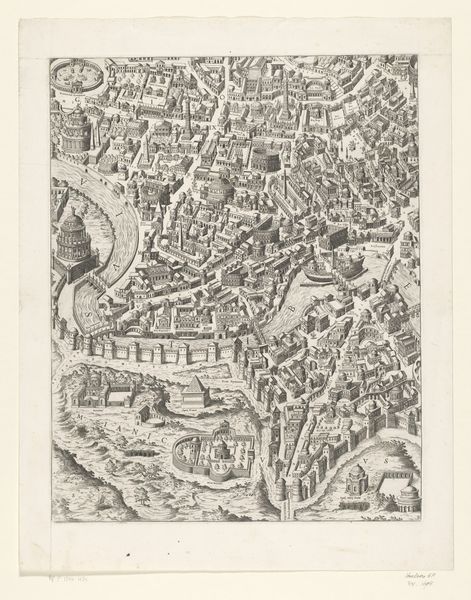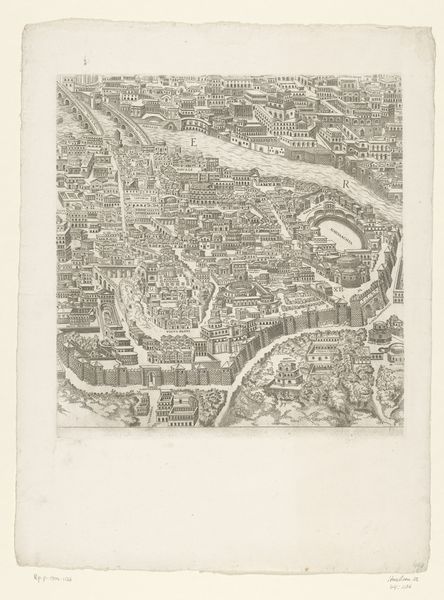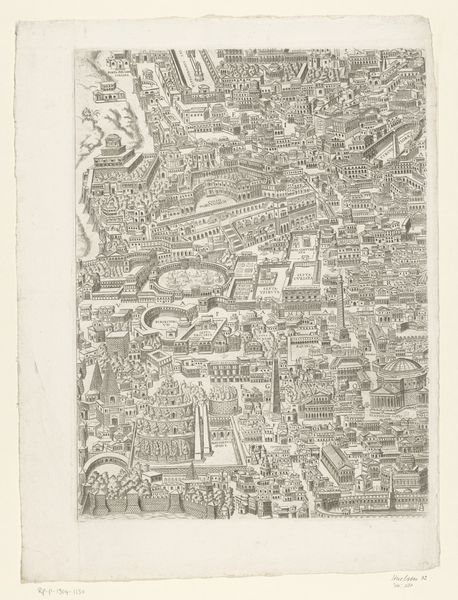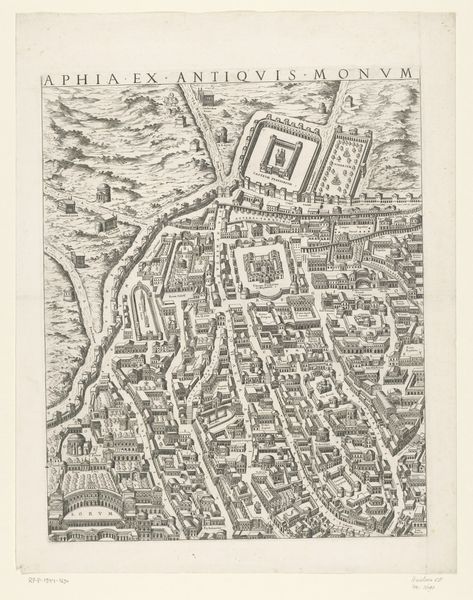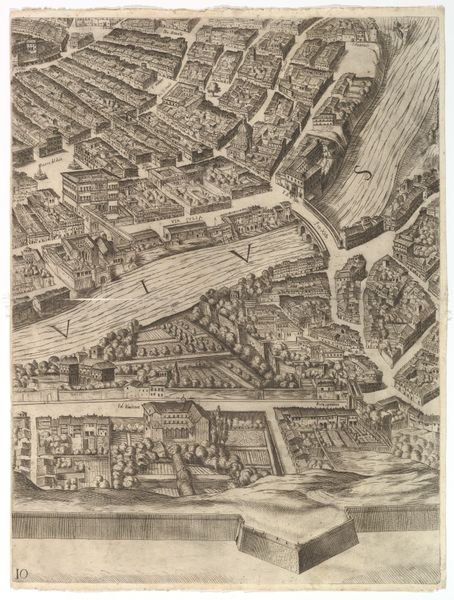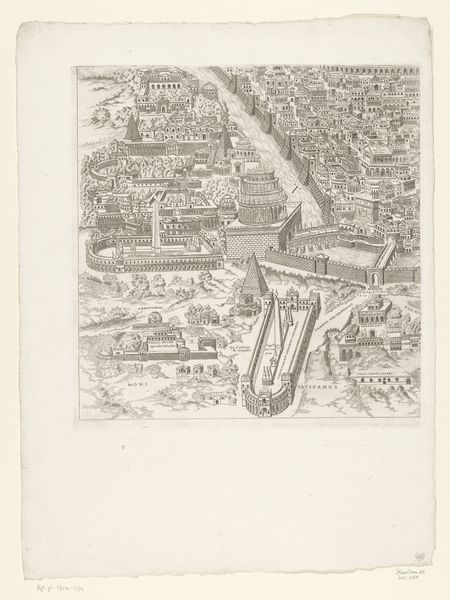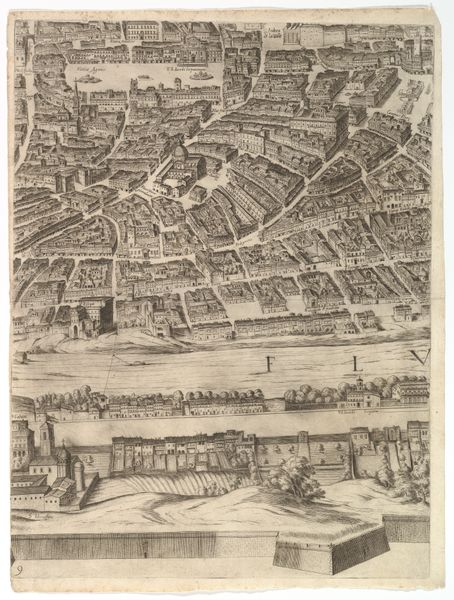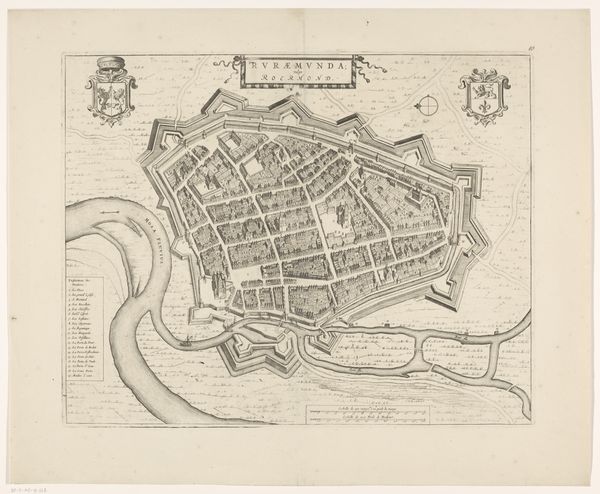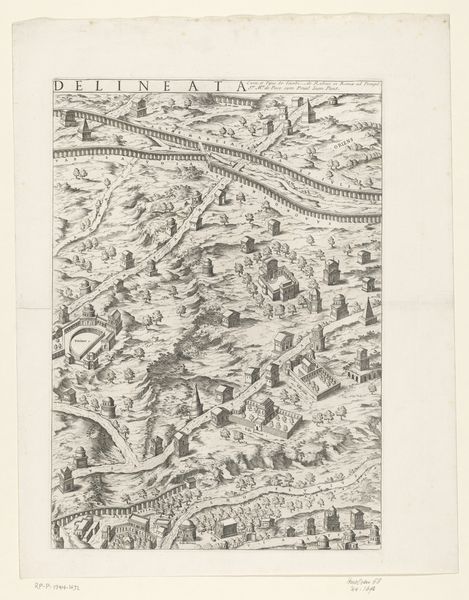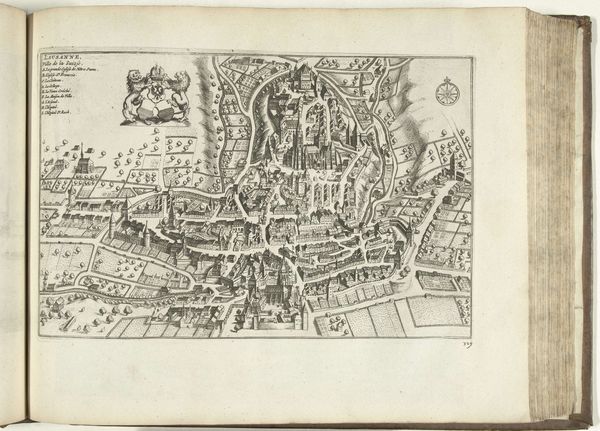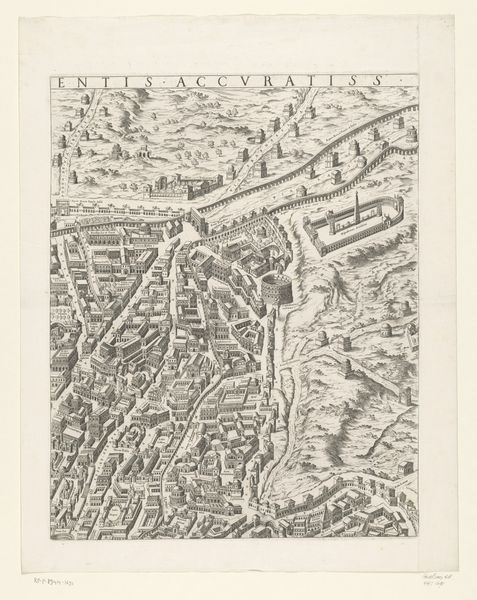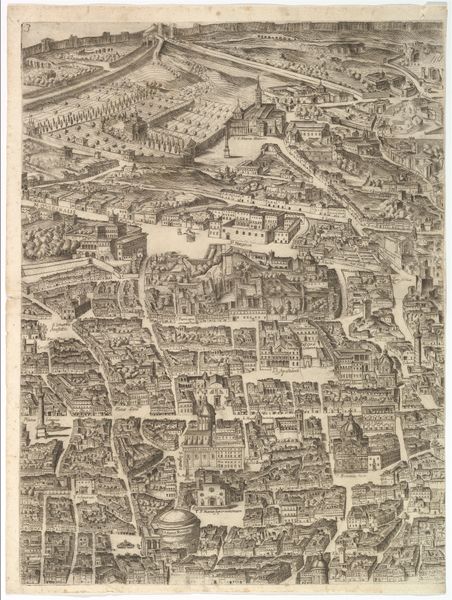
Plattegrond van Rome in de Romeinse tijd (zevende deel) 1639 - 1691
0:00
0:00
etienneduperac
Rijksmuseum
print, engraving
# print
#
romanesque
#
geometric
#
cityscape
#
history-painting
#
engraving
Dimensions: height 521 mm, width 417 mm
Copyright: Rijks Museum: Open Domain
This is Étienne Dupérac's engraved plan of Rome made in the late 16th century. It offers us a bird's-eye view of the city as it was imagined in ancient times. Dupérac made this print at a time when Rome's urban fabric was undergoing dramatic transformations under the patronage of powerful popes. The rediscovery of classical texts and the excavation of ancient ruins fueled a fascination with Rome's imperial past. This plan attempts to reconstruct that past, blending historical knowledge with contemporary imagination. Note how the artist emphasizes the grandeur of ancient monuments like the Colosseum and the Roman Forum, imbuing them with a sense of timeless authority. As art historians, we might consult archaeological reports, architectural treatises, and contemporary accounts to understand the accuracy and biases of Dupérac's reconstruction. What did the Rome of the past mean to the Rome of the present?
Comments
No comments
Be the first to comment and join the conversation on the ultimate creative platform.
